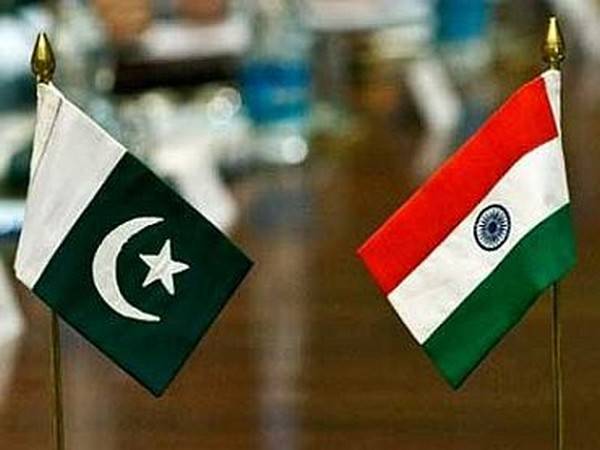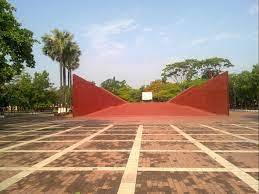On that day, the chilly Himalayan winds cut through the dissected heads of the captives, their peeling skin and lifeless necks requesting for death. They prayed for mercy, for a quick slash of sword or a bullet in heart — an easy death.
The genocide of 1947 in Mirpur, Pakistan Occupied Kashmir (PoK), revealed the satanic face of the Pakistan army and its deception and cheating character, which is now being revealed to the world as its standard USP.
In his book “Forgotten Atrocities: Memoirs of a Survivor of the 1947 Partition of India”, Bal K. Gupta revealed that in Mirpur, “death seemed merciful, but the man had forgotten everything about it… Every night I used to think it to be the last one, I would pray for death to come”.
It has been 74 years since the dreadful hell was unleashed on 18,000 brave Mirpuris who chose martyrdom over submission while fighting with Pakistani raiders from November 25-27, 1947. The most inhuman song of death was enjoyed by the marauders living off the cries and pains of the dead and the wounded in Mirpur.
Mirpur city stood between India and Pakistan after the Partition. The Pakistan government had a notorious plan to take control of J&K by force and for that, it decided to cheat the Mirpuris.
In the second week of October, 1947, it sent a bag of pamphlets written in Urdu to Mirpur, reading that if the citizens would allow the Pakistan army to establish itself in Mirpur, it would give them a special status in the country.

The patricians outrightly rejected the proposal of Pakistan and swore to fight to the last bullet if the Pakistani army advanced. On October 26, when Pakistan had to gulp down the bitter truth that Kashmir would belong to India, it made a secret pact with Pathan mercenaries, the “Zen and Zar Agreement”, which stated that after the capture of Mirpur city, the women would belong to the Pathans, while the immovable property (land) would be Pakistani.
And then using deception, as per habit, it pushed through Mirpur and drained it dry through nonstop firing and heavy gun operation from the Pakistan army. Hindus and Sikhs were the first to be wiped out. The insufficient police and young men shielded the city with their little supply of ammunition and sent the armed forces back on November 6, 10 and 21, 1947. They would rather die than give in. Unfortunately, due to technical defects in the wireless at the police camp in Mirpur and political differences between J&K and India, the Indian government could not save Mirpur.
November 24, the doomsday, saw a thick cover of artillery shelling and bursting of heavy grenades, a declaration of war by Pakistan in Mirpur. But thick smoke and fires saw spirited resistance through hand-to-hand combats with the infiltrators.
Unfortunately, in the end, the security was brought down to zero. The state administration headed by Wazir Wazarat decided to covertly move to Jammu, leaving behind the ill-fated city population to face the rage of the marauders.

The citizens were left for the hungry wolves to savour. More than 12,000 died the same day, their bodies covering each inch of the land. But this was not the end of their obliteration — during the night 2,000 townspeople were held captive and were asked to surrender all the cash and jewellery. The men were asked to unclothe before being tortured and killed in batches throughout the night.
The women automatically “belonged” to the Pathans according to “Zen and Zar”. Further, 2,000 more were killed in groups and the rest 5,000, all Hindus and Sikhs, were held captive at the Alibeg prison. The prison was really a gurdwara, which was destroyed during the invasion and then used as a prison.
A Sikh holy shrine was converted into a slaughterhouse. The chilly Himalayan winds cut through the dissected heads of the captives, their peeling skin and lifeless necks requesting for death. They prayed for mercy, for a quick slash of sword or a bullet in heart — an easy death.
On December 1, 1947, a young Muslim attorney, Mohammad Ibrahim, gained the confidence of the Alibeg captives of Mirpur by telling them that he will ensure their employment in Pakistani factories till they were prisoners. For good faith, he distributed Muslim caps and mufflers to a few as a gesture, which were in fact signals to the Pakistani soldiers to kill those persons first. The following morning they were slaughtered on the side of the Jehlum canal. And this happened daily to Hindus and Sikhs. Apparently in the “eyes of Allah”, the captives were “criminals” for not being one of them.
In January 1948, a team of ICRC (International Committee of Red Cross) reached there and took charge of the Alibeg camp. By March 18, 1948, they managed to get the captives exchanged for the same number of Indians willing to go to Pakistan. The Alibeg camp held only about 1,600 people as the rest were either killed or kidnapped. And these 1,600 were either aged or injured to the point of handicap. But women were spared, only to be kidnapped into a life of misery.
In remembrance of the martyrs, the government of Jammu and Kashmir constructed a memorial titled ‘Mirpur Shaheedi Samark’ on the Mirpur Road (Jammu), which was named so on the same day — November 25, 1998 — to pay tribute to the unsung heroes of the country who laid down their lives, but did not give in to the satanic plans of Pakistan for J&K.
Mirpur was a haven of mesmerising sunrises and sunsets, religious harmony, and quality life. Today this soulless city holds the 7th largest dam in the world — Mangala Dam — built on the graves of courageous people who fought for their homes. The world wonders — what does it take for a so-called “peaceful” and “highly-religious” country to be this shameless?

Leave a Reply